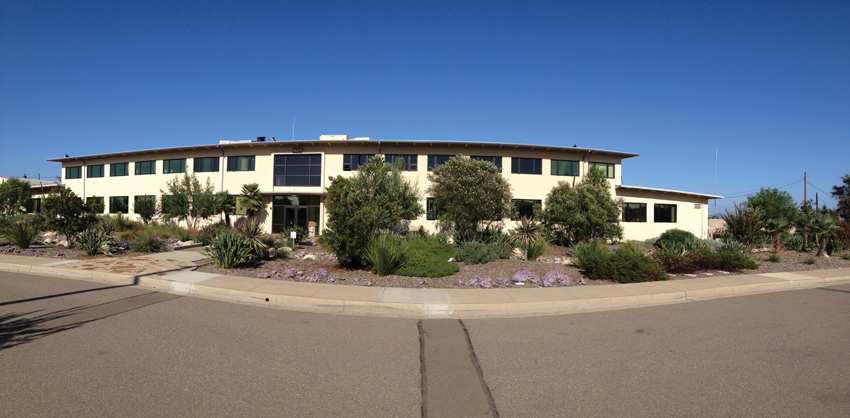Too Transparent?
DYNAMIC GLAZING
Growing in popularity, a compelling alternative to the challenges inherent in shading systems is dynamic glazing. In response to a low-voltage application of electricity, a pane of electrochromic glass darkens to one or more predetermined levels and then returns to its clear state once the voltage polarity reverses.
“Dynamic glass is a great option, as it allows for expansive windows, without the need for blinds and shades, because the windows tint on demand,” explains Brandon Tinianov, vice president of business development for dynamic glazing manufacturer View in San Francisco. “By decreasing the heat that is associated with a typical window installation, dynamic glass decreases HVAC costs by about 20 to 25 percent, and in a new build, can influence builders to use a smaller HVAC system from the start.”
Case in point, at the net-zero-energy Marine Corps Air Station City Hall building in Miramar, California, 1,935 square feet of low-performing, clear glass was replaced with dynamic glazing and then measured and verified over a period of 12 months by the U.S. Department of Defense’s Environmental Security Technology Certification Program. Posting impressive findings, the installation achieved close to 30 percent in HVAC savings, more than 60 percent in lighting savings, and a 95 percent satisfaction rate by building occupants.3
On another recent project, Shepley Bulfinch was tasked with finding the best way to reduce light levels for a higher education building atrium. “During the summer months, direct sun in the space made it uncomfortable for students. However, light levels were pleasant on overcast days or during the winter,” says Jonathan Baron, AIA, LEED AP, Boston-based director of Shepley Bulfinch. “Shading was found to be too expensive, and baffles that might block some of the sunlight were found to be too intrusive in the existing space. Finally, tinting the glass to cut summer sun would leave the space gloomy and unpleasant on winter days.”
Ultimately, electrochromic glass proved to be the best solution to this complicated problem. It blocks sunlight from directly entering the space, but still allows indirect sunlight in more favorable locations.
In terms of recent technological advances with dynamic glazing, manufacturers are incorporating sophisticated control algorithms into their systems, which take into account advanced weather inputs to better predict the sun’s movement and incoming weather conditions, such as cloud cover. Fed by real-time information, the dynamic glazing automatically adjusts based upon the current lighting and solar gain levels entering the facade.
Other, newer dynamic glazing options include multiple tint zones within one pane of glass and the ability to specify the product in a variety of geometric shapes, such as triangles, parallelograms, and diamonds.
While the technology is considered to be commercially viable, it is still relatively new to the market and has not yet been widely adopted.

Photo courtesy of The View
Dynamic glazing was independently verified to save 30 percent in HVAC costs, more than 60 percent in lighting expenses, and post a 95 percent satisfaction rate by building occupants at the net-zero-energy Marine Corps Air Station City Hall building in Miramar, California.









